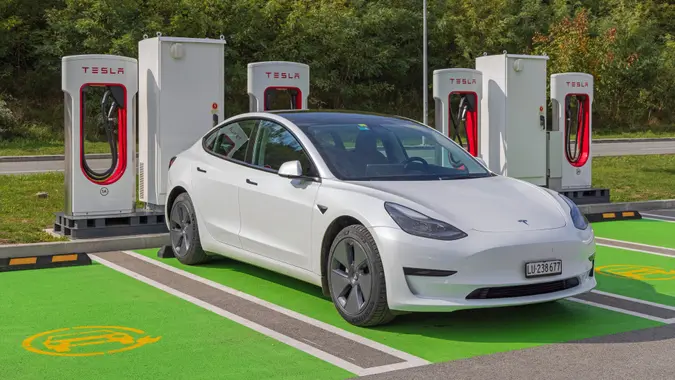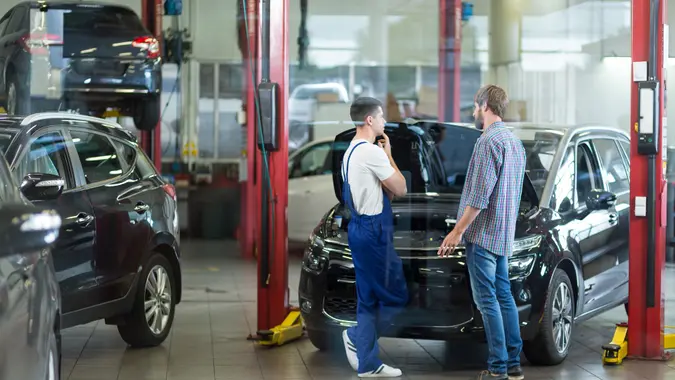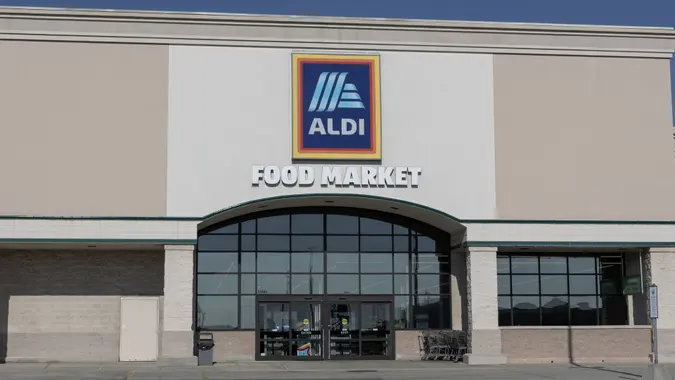Graham Stephan: Why Car Market Is ‘Changing in Your Favor’

Commitment to Our Readers
GOBankingRates' editorial team is committed to bringing you unbiased reviews and information. We use data-driven methodologies to evaluate financial products and services - our reviews and ratings are not influenced by advertisers. You can read more about our editorial guidelines and our products and services review methodology.

20 Years
Helping You Live Richer

Reviewed
by Experts

Trusted by
Millions of Readers
Financial personality Graham Stephan posted a YouTube video in late November titled “The Auto Market Bubble Just Popped.” In it, Stephan made the case that the tight car market of the past few years has finally loosened up, with market dynamics shifting in the favor of car buyers.
Here’s a look at some of the statistics Stephan cited in the video, his reasons for thinking the tide has turned and his projections for the near-term future of the auto market.
What Made the Car Market So Pricey the Last Few Years?
Several factors helped push up car prices to stratospheric levels in the past few years, but Stephan cited four in particular as having the most effect:
- Limited production
- Low interest rates
- Long ownership
- Auto greed
Production during and after the pandemic slowed to a halt in most industries. The automotive industry was no different. In addition to all sorts of supply chain issues, the industry suffered mightily from a shortage of microchip production.
Although you might think of computers and smartphones when you think of microchips, the fact is that most new cars require more than 3,000 microchips to run all of their functions. Tight production in all of these areas led to a shortage of new cars, thereby driving up prices.
With the supply side of the equation lacking, the demand side was surging, thanks in large part to record-low interest rates. The cost of new cars was already rising due to the lack of supply, but the coincidental rise in demand pushed up prices even further.
Supply was further constrained at this time due to the rising length of ownership. When cars are owned for a longer period, there is less supply available, particularly in the used car market. With fewer vehicles available to purchase, prices will rise as a consequence.
Lastly, Stephan opined that car makers enjoyed the increased prices they were receiving for their vehicles and so tried to keep production artificially low. This helped to further tighten supply, keeping prices higher.
All in all, according to Stephan, roughly 80% of new cars were selling above MSRP during this period.
How Are Things Changing?
Stephan noted that many of the conditions that kept car prices high are starting to fall by the wayside. For starters, supply chain issues are largely a thing of the past, with most automakers getting all of the chips that they need. High interest rates are also playing a role, as they have been driving down demand. Put these two factors together and instead of having low supply and high demand, the market is shifting toward high supply and lower demand.
Stephan used market statistics to back up his assertion. Here are some of the data points that Stephan cited as evidence of a car market changing in favor of buyers:
- Prices have been declining the most in a decade
- EV prices in particular are cratering, falling 32% from a year ago, led by Tesla’s 33% price decrease
- There is finally a rapidly growing used EV market
- Overall car prices have fallen 1.13% in just the last 30 days
- Owners are falling behind on their payments at the greatest rate on record
- Most trade-ins are underwater, at an average amount of $6,000
- Car repossessions are on the rise
- 6.11% of subprime borrowers are now 60 or more days late in their payments
- According to CNN, defaults, which are rising due to a number of factors, are expected to increase to a peak of about 10% in the next year
- A growing number of car owners have been researching how to walk away from an underwater car loan
When combined, all of these factors are reversing the upward price trend in the auto market.
Where Does Stephan See the Market Going?
With increasing supply and falling demand, basic economics say prices will fall. If defaults continue to rise — as is likely the case (one-third of American borrowers are in the subprime category, Stephan said) — it means the supply of repossessed vehicles also will increase, further driving down prices.
Meanwhile, high interest rates are not just deterring new buyers; they are motivating car dealerships to move vehicles off their lots. The carrying cost dealers have to pay every day to hold cars on their lots has increased by a factor of three or four from just a few years ago, making them eager to move inventory as fast as possible.
All in all, things should get easier for car buyers going forward.
What To Do If You’re on the Other Side of the Equation
If rather than being a car buyer you are already struggling with car payments, Stephan suggested you try to negotiate your way to a better payment. Talk to your lender and see whether you can negotiate a lower interest rate or perhaps a longer term to reduce the amount of your payments.
Once you finally pay off that debt, however, Stephan recommended that you avoid using a high-rate loan to finance a depreciating asset — which 99.99% of all cars are — in the future.
More From GOBankingRates
 Written by
Written by  Edited by
Edited by 

























